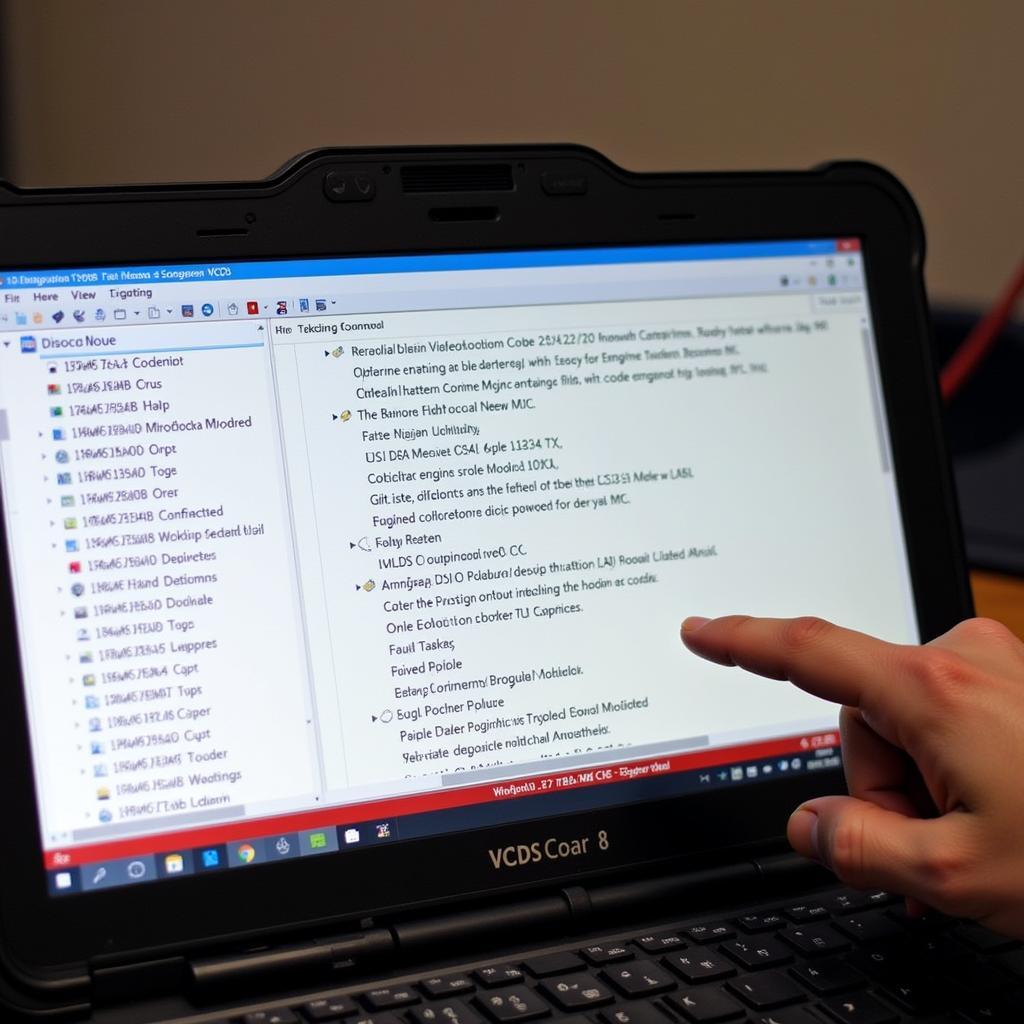Your cart is currently empty!

Mastering VCDS Fault Reader: Diagnose and Fix Car Issues Like a Pro
A VCDS fault reader is an invaluable tool for any car owner, mechanic, or technician dealing with Volkswagen Auto Group (VAG) vehicles. This powerful diagnostic software allows you to delve deep into your car’s systems, identify fault codes, and even make coding changes. This comprehensive guide will equip you with the knowledge and skills to effectively use a VCDS fault reader, transforming you from a novice to a confident troubleshooter.
After connecting your VCDS fault reader, like the one you can buy VCDS HEX-V2, the first step is to identify the fault codes.
Understanding VCDS Fault Codes
Fault codes are the language of your car’s onboard diagnostic system. They are alphanumeric codes that pinpoint specific malfunctions within various modules, such as the engine, transmission, ABS, and airbag systems. Using a VCDS fault reader gives you access to these codes, along with detailed descriptions and potential solutions. Imagine having a direct line of communication with your car, understanding exactly what’s ailing it. That’s the power of VCDS.
Decoding the Secrets of VCDS Fault Codes
Each VCDS fault code consists of five characters: a letter and four numbers. The letter indicates the system where the fault lies (e.g., P for Powertrain, B for Body, C for Chassis). The numbers provide more specific information about the nature of the fault. For example, P0300 indicates a random/multiple cylinder misfire. Understanding this structure is crucial for accurate diagnosis.
 Example of a VCDS Fault Code Display
Example of a VCDS Fault Code Display
Diagnosing Car Problems with VCDS Fault Reader
Once you’ve identified the fault codes, the next step is to diagnose the underlying problem. This involves a combination of research, logical deduction, and sometimes, hands-on testing. Don’t just treat the symptom; find the root cause. VCDS provides the information you need to be a detective for your car’s health. You might find it helpful to learn about using VCDS for OBD2.
Common VCDS Fault Reader Uses
A VCDS fault reader can be used for a wide range of diagnostic tasks, including:
- Identifying and clearing fault codes
- Reading live data from various sensors
- Performing output tests on actuators
- Adapting and coding control modules
- Accessing hidden features and functionalities
 Diagnosing a car problem with VCDS
Diagnosing a car problem with VCDS
Troubleshooting Tips with Your VCDS Fault Reader
- Start Simple: Check the basics first, such as fuses, relays, and wiring connections. Sometimes the simplest solution is the right one. Think of it like checking your phone charger before assuming your phone battery is dead.
- Cross-Reference: Consult reliable online resources and forums for information about specific fault codes. The collective wisdom of the VCDS community can be incredibly valuable. If you’re working on a TDI engine, you can find specific information about VCDS TDI.
- Think Logically: Consider the symptoms, the fault codes, and the potential causes. Like a detective solving a case, piece together the clues to arrive at the most likely diagnosis.
- Document Everything: Keep a record of the fault codes, your diagnostic steps, and any repairs performed. This creates a valuable history for future reference.
“A good mechanic doesn’t just fix the problem; they understand why it happened in the first place.” – John Smith, Automotive Engineer.
Advanced VCDS Functions: Coding and Adaptations
Beyond simple fault code reading, VCDS unlocks advanced functionalities like coding and adaptations. This allows you to customize various settings, such as automatic locking, lighting behavior, and even some performance parameters. Imagine tailoring your car’s behavior to your exact preferences – VCDS empowers you to do just that. For those with a VW Passat B7, explore specific resources on VCDS codes reader VW Passat B7.
Navigating the World of VCDS Coding
Coding involves modifying the software within your car’s control modules. While this can unlock exciting features, it’s crucial to proceed with caution. Incorrect coding can lead to unexpected behavior or even damage to your car’s systems. A great place to start is by learning more about a VW VCDS reader.
“Knowing how to use VCDS is like having a secret weapon in your automotive arsenal.” – Maria Garcia, Master Technician
Conclusion: Empowering Car Owners with VCDS Fault Reader
The VCDS fault reader is more than just a diagnostic tool; it’s a gateway to understanding and controlling your car. From identifying simple faults to customizing complex settings, VCDS puts you in the driver’s seat when it comes to your car’s maintenance and performance. With the knowledge gained from this guide, you’re well on your way to mastering the art of automotive diagnostics. Need further assistance? Don’t hesitate to connect with us at vcdstool.com. Our office is located at 6719 W 70th Ave, Arvada, CO 80003, USA, and you can reach us by phone at +1 (641) 206-8880 and our email address: vcdstool@gmail.com.
by
Tags:
Leave a Reply